All about sphagnum
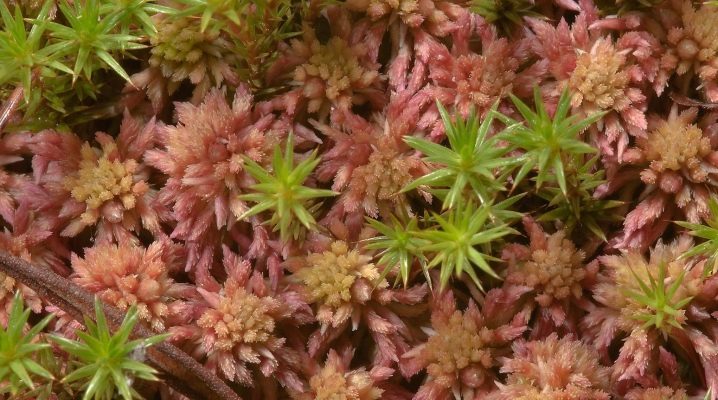
Sphagnum moss is found in many regions of the country. The plant is used in various fields of activity. Sphagnum is very popular among flower growers.
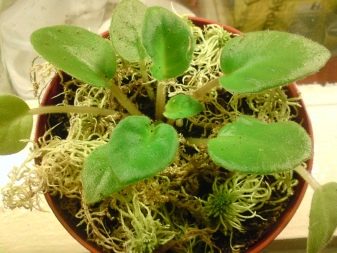
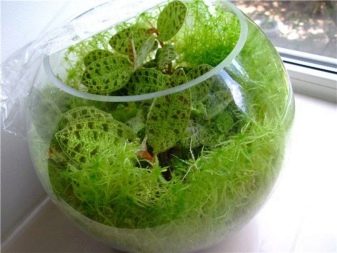
What it is?
Sphagnum is most often found in the northern regions of Russia and Belarus. Its habitat is forest thickets, swamps and streams. The plant is unpretentious, so it feels good even in the shade. Moss can grow not only on the ground, but also on trees or even on iron.
Outwardly, the plant looks quite simple. It has thin green stems that extend upward. On top of each of them are very small leaves. This plant has no root system. This makes it different from other mosses.
Sphagnum is very tenacious. With the onset of winter, it freezes, but in the spring it recovers. Over time, the lower part of the stem dies off, and then rotts and turns into peat. A plant can be in one place for many years.
Sporulation occurs annually on the surface of the moss. Matured spores are used for the reproduction of sphagnum. In nature, moss multiplies very quickly. In forest or swampy areas, you can see wide green carpets of soft sphagnum.
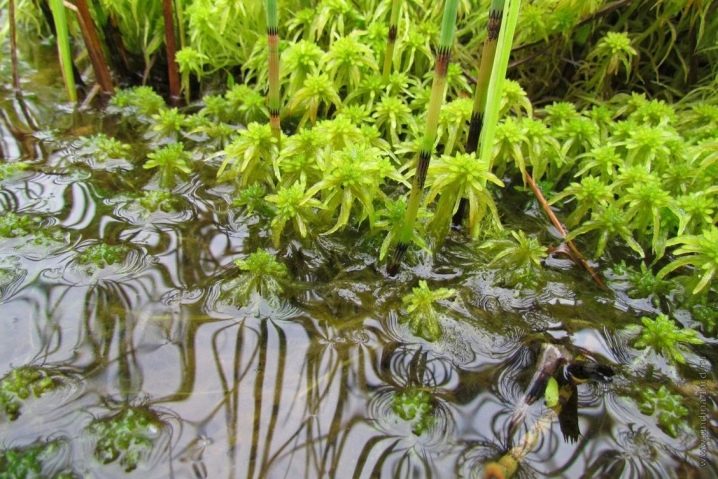
What is it used for?
Green moss is actively used by gardeners and florists. It is used in the following areas.
- Growing flowers. Florists often use this natural material when growing indoor plants. It is very often added to earthen mixtures. This allows you to make the soil lighter and more loose. Moss is also often found in the bottom of the pot. This drainage layer absorbs excess moisture. Therefore, the roots of the plant do not rot even with excessive watering. During a short-term drought, sphagnum gives water to the plant. Therefore, it is very easy for flowers to adapt to a lack of watering.
- Rooting cuttings. When propagating trees, flowers, or shrubs, moss can be used to root cuttings. It is usually placed in a container and moistened with a spray bottle. After that, the cuttings are placed there. In such conditions, the first roots appear very quickly on their edges.
- Air humidification. Sphagnum may well be used for natural indoor air humidification. For this, a layer of expanded clay is placed in the pot. Sphagnum is placed on top of it. Spraying greens in the morning and in the evening can significantly increase the humidity in the room.
- Plants decoration. The stems of some indoor flowers stretch out and become bare. To make the plant look more voluminous, you can wrap it in moss. At the same time, the sphagnum is fixed with a thin wire. Such a wrap will definitely benefit flowers with airy roots. Moss can be used to decorate the stems of monstera, dracaena or begonias.
- Mulching the site. Sphagnum is used not only in floriculture. It can be used to protect plants from cold weather. Sphagnum is wrapped around the trunks of young seedlings, as well as trees and bushes, which are especially susceptible to cold weather. In addition, it is used for mulching flowers and plants in a vegetable garden or garden. It perfectly retains moisture in the soil.
- Fertilizing plants. Sphagnum itself does not contain any nutrients. But at the end of the life cycle, a peat layer forms under the moss. Sphagnum peat can be used to feed plants. The main thing is to remember that this product increases the acidity of the soil.Therefore, it is not suitable for all plants.
- Site decoration. Bright green moss can also be used simply for decorating flower beds. It looks especially beautiful on the alpine slides. Green decor looks beautiful and original at any time of the year.
- Harvest storage. Moss can be used to protect harvested fruits from rot. Layers of bulbs and root crops are shifted with green mass. In this form, they are stored much longer. Likewise, moss can be used to store bulbs or tubers of thermophilic plants. It will reliably protect the planting material from drying out and mold.
- Germination of seeds. Moistened sphagnum can be used to germinate seeds of any crop. It is placed in containers and moisturized well. Under these conditions, seeds germinate quickly and without any problems.

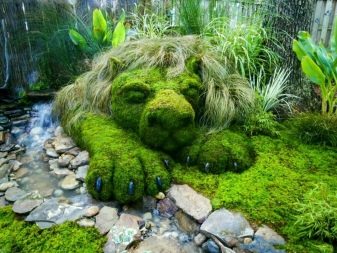
Soft moss can also be used as litter for cat litter boxes. It perfectly kills unpleasant odors. In addition, it is often placed in snail and turtle aquariums.
Popular types
There are many varieties of sphagnum in nature. The most popular are the following types of plants.
Baltic
This moss grows near swamps. It covers the surface of the earth with a solid carpet. Small foliage of such sphagnum looks like small triangles of regular shape. Moss can be white, yellow or green.
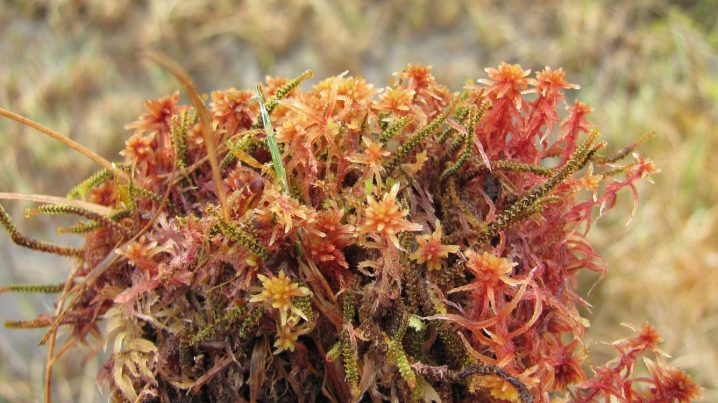
Wolfe
This moss has brittle stems and branches. It is quite dry and tough. The foliage in the lower part of the moss has a triangular shape, in the upper part it is ovoid.
Moss takes root well in most areas.
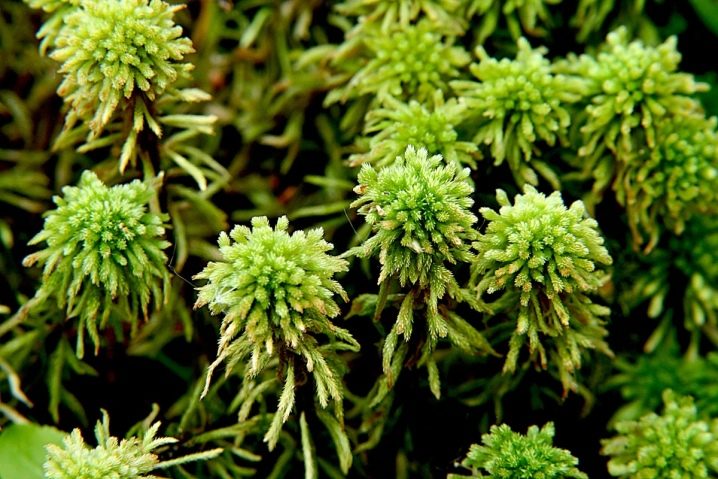
Hairy
This perennial is common in temperate regions. In height, it grows up to 20 centimeters. The plant has light green foliage and bright yellow or red stems. Moss grows well next to swamps or wet meadows. It looks very pretty and serves as a wonderful backdrop for flowers.

Swamp
This type of moss is found in birch and pine forests, as well as near swamps. His color can be brown or dark green. The foliage of such a moss is curved. Its size is within 1 mm.
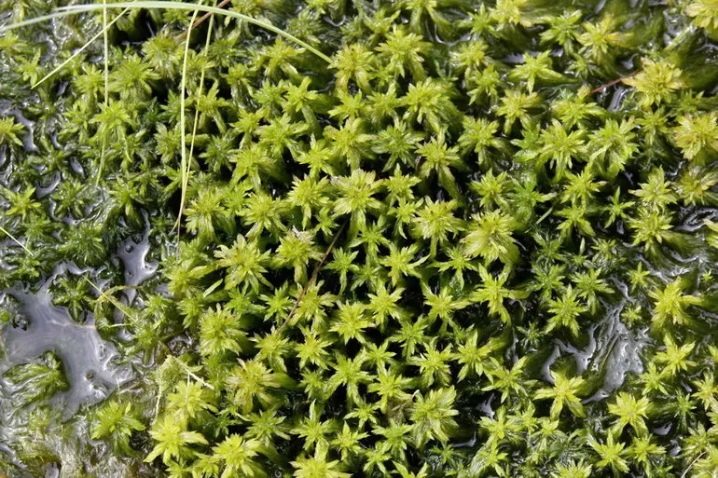
Brown
This moss is very low. It grows either as a solid carpet or in large spots. The stems of such plants are thin. They can be brown or brownish. The foliage of such a sphagnum is oval.
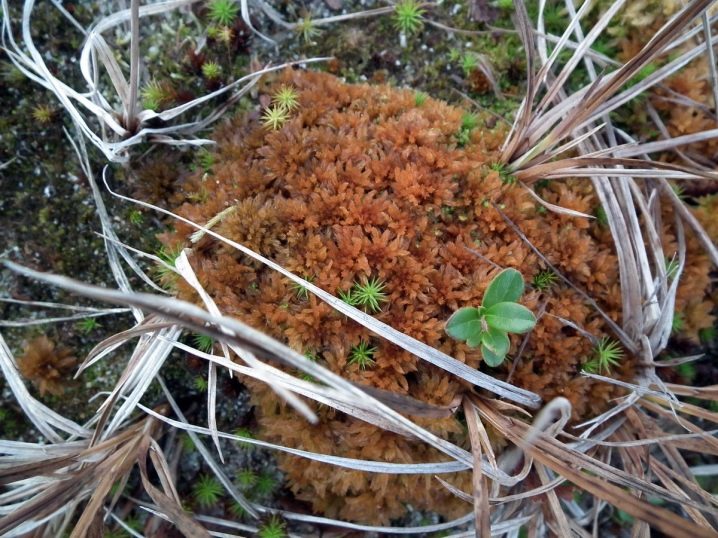
Narrow-leaved
This moss has small foliage and a thin stem. The color of sphagnum is yellowish-green. The foliage of the plant is elongated and narrow. That is why it got its name.
This type of sphagnum grows in swampy forests or near water bodies.
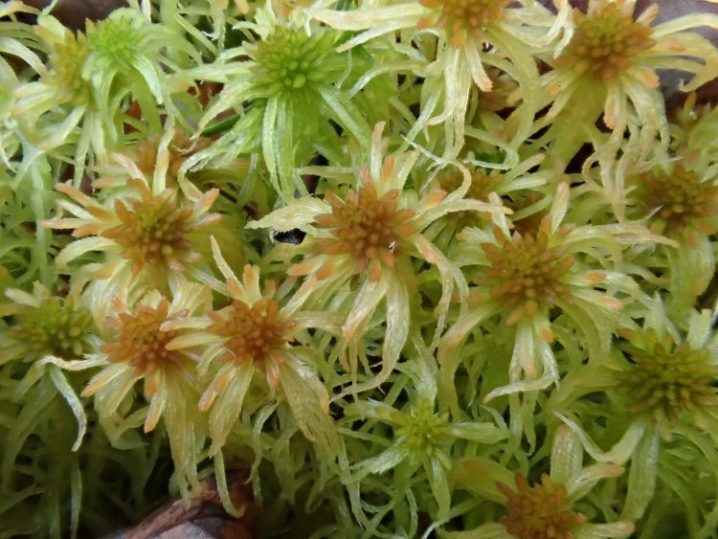
Protruding
This moss differs from other varieties of sphagnum in its thin stems. Its foliage is elongated. There is a slight fringe at the top of each leaf. This plant variety can be found in many mixed or coniferous forests.
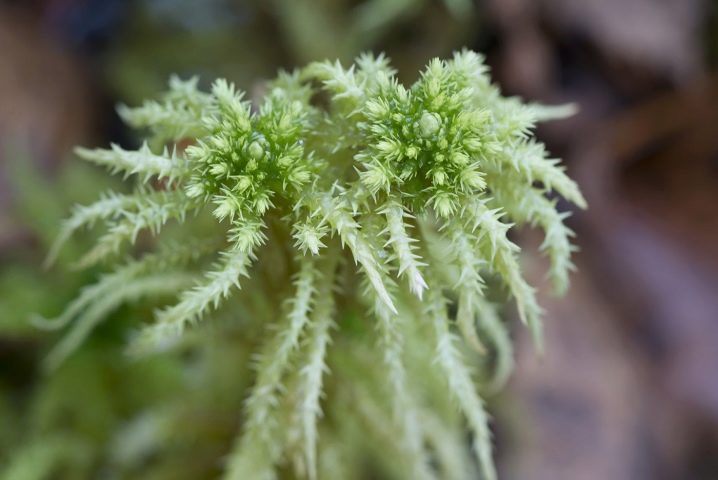
Magellanic
This sphagnum has branched stems and neat ovoid foliage. Most often it can be found in pine forests or bogs. The plant grows well in the shade and is completely unpretentious.
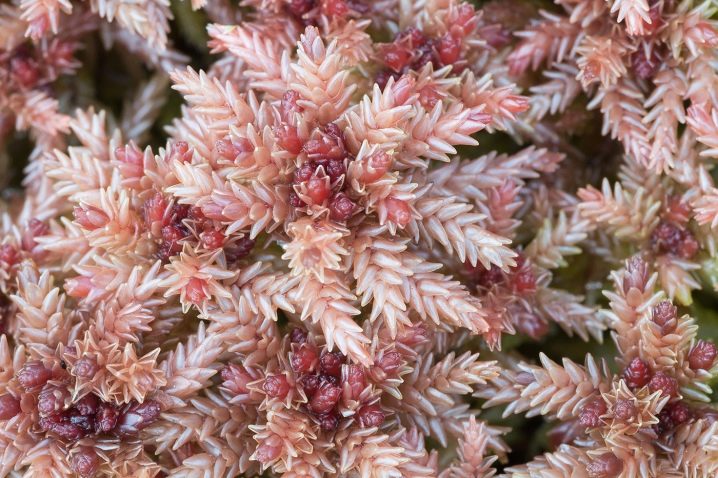
Smooth
This type of moss has yellowish or slightly brown stems and leaves. Its foliage is smooth and shiny. Such sphagnum grows in open swamps.
If you create the right conditions for him, he will feel good at his summer cottage.
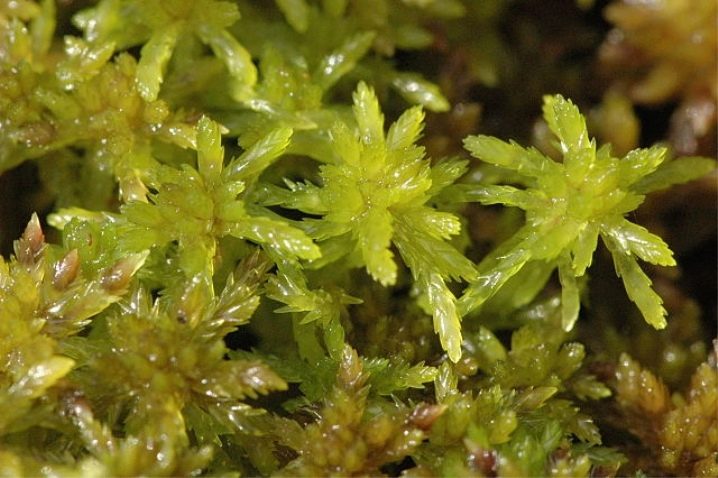
Holly
This moss is also often called oak moss. It is widespread in temperate climates. The plant is found both in forests and in swamps or mountains. Its stems are brown or red, and the foliage is dark green.
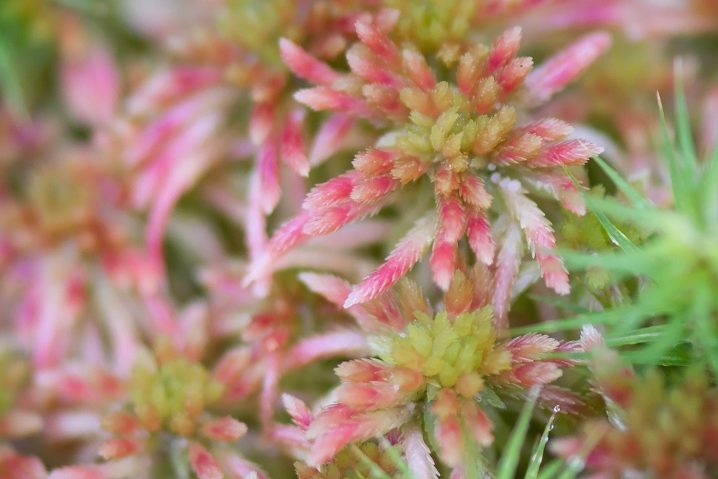
Lindbergh
This type of sphagnum can be found in swamps. Its stem foliage is rectangular, with fringed edges. The twig leaves of the moss are shiny.
This species of sphagnum is listed in the Red Book. Therefore, it is not recommended to harvest it in the wild.
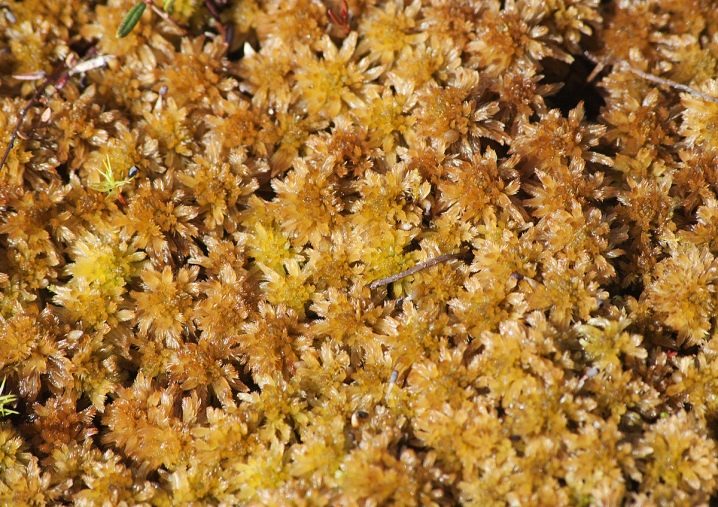
Soft
This is another rare species of moss listed in the Red Book. He prefers a mild and humid climate. Therefore, this type of sphagnum is found in swampy areas.
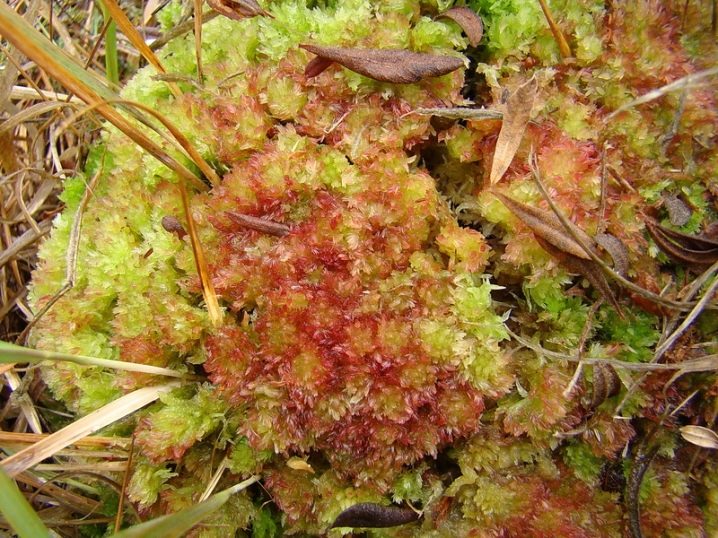
Girgenzon
This moss lives in damp forests and tundra. It is loose and soft. The color of such a plant can be either yellowish-green or brown. When dry, the green friable mass becomes tough and brittle.
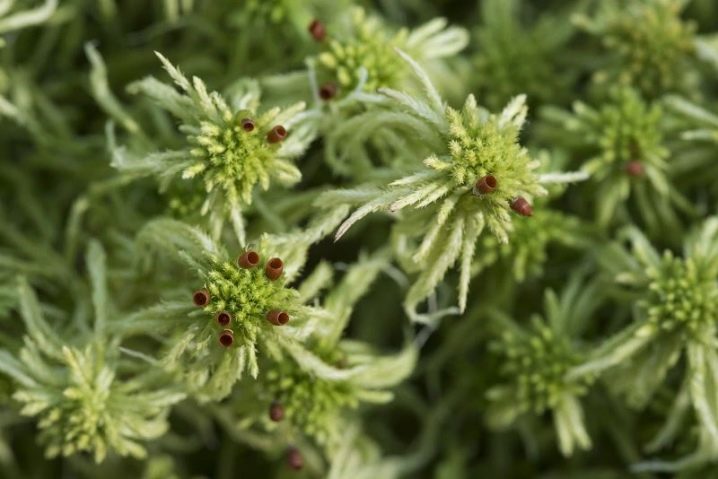
How to grow at home?
Growing moss at home is a fairly simple process. Sphagnum can be stored in glass flasks or bulk containers. The green mass is laid with the green tops facing up. A little purified soft water is poured into the container. Cover it with a transparent film on top. In order for the moss to "breathe", several small holes must be made in it.
The container with herbs should be located in a bright place. However, it cannot be in direct sunlight. From time to time, the moss should be sprayed with warm water. It shouldn't dry out.
If desired, moss can also be grown in the garden. Its planting is worth doing in the fall. The area for growing greenery should be well shaded. Moss dries very quickly in the sun. Before planting sphagnum, the area must be cleared of small pebbles, plant debris and debris.
In order for the moss to take root, it is important that the surface on which it is placed is rough.
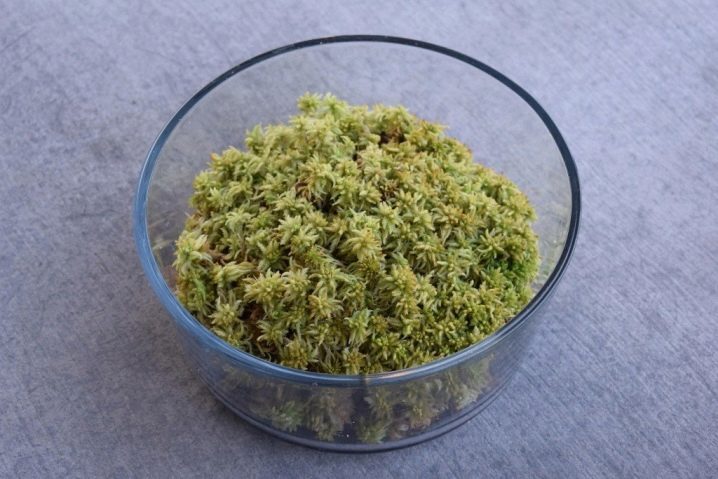
Collection and storage
Collecting moss is recommended in the fall. For storage, you should choose a product collected in clean and not very wetlands. In this case, it will take less time to dry the material.
Collect moss carefully. Since it has no roots, it is very easy to remove it from a large green carpet. At the same time, when going after moss, it is recommended to cut off only the upper part of the plants. This process will take longer. But it does not have to be further cleaned.
Fresh product must be sterilized immediately. To do this, it is poured with hot water and left in this form for 5 minutes. After that, the green mass is carefully squeezed out and sent to dry. Moss can be dried both in the sun and near heating devices. The main thing is not to overdry the plant. This will make it too brittle.
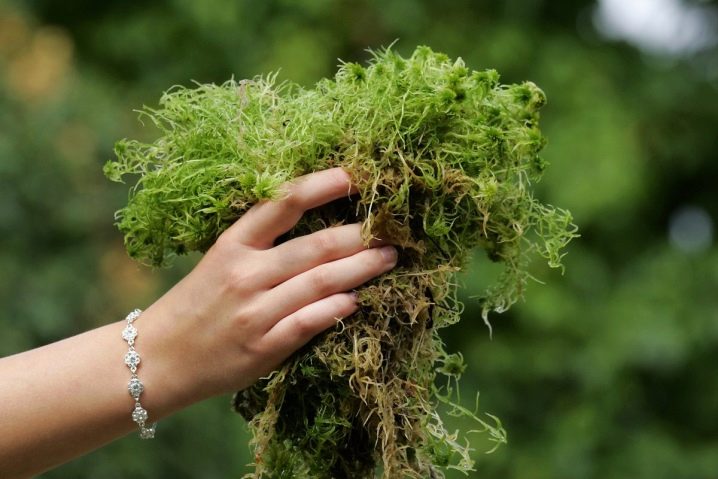
It is recommended to store the moss prepared in this way in bags. It is advisable to keep it in a cold place. Some people put it in the freezer and then take it out as needed. When defrosting and re-freezing, moss does not lose its beneficial properties.
It is not recommended to buy sphagnum. It turns to dust or molds very quickly. Using it for germinating seeds or mulching plants is unlikely to work.
Generally sphagnum moss is a real find for flower growers and gardeners. Therefore, learning how to grow it will be useful to any person.
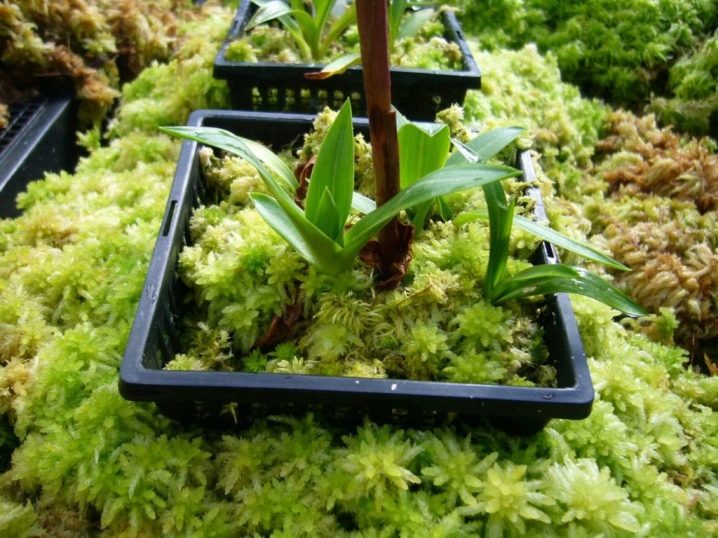













The comment was sent successfully.